Fermi-Walker Transport in Minkowski Spacetime
This is the first of several posts that will develop some mathematical machinery for studying Fermi-Walker transport. In this first post, we focus on Minkowski spacetime in order to introduce the basic concepts without having to deal with the complications introduced by spacetime curvature.
Before looking at Fermi-Walker transport, we first need to introduce the concept of a frame field. A frame field is defined as an assignment of four mutually orthogonal vectors (one timelike and three spacelike) to every event in some region of spacetime. Typically the timelike vectors are tangent to some family of worldlines of interest, and the spacelike vectors represent particular “directions in space” that have some useful meaning. A simple physical realization of a frame field would be a family of observers whose worldlines fill some region of spacetime, and each of whom carries a clock and a set of three mutually orthogonal rulers.
The general idea behind Fermi-Walker transport is that it defines a frame field whose spatial basis vectors are “not rotating”. This is basically a generalization of the concept of parallel transport, which takes into account the fact that, for a non-geodesic worldline, the tangent vector, which for timelike worldlines will be the timelike vector of the frame field, is not parallel transported along the worldline. MTW goes into this in some detail, and their discussion brings out a key point: as it stands, “not rotating” makes no sense for an accelerated worldline, because the timelike vector of the frame field must be rotating in the spacetime sense if it is accelerated, in order to remain tangent to the worldline. The best we can do is to ensure that there is no additional rotation of the spatial basis vectors, over and above the rotation due to proper acceleration, and this is what Fermi-Walker transport does. In terms of the simple physical realization we described above, Fermi-Walker transport means that each observer’s rulers are gyro-stabilized so their directions do not rotate (although, as we will see, the term “rotate” has to be interpreted carefully and “not rotating” doesn’t quite mean the same thing as it does in Newtonian mechanics).
Let’s start with a simple case to see how this works: the Rindler congruence, a family of uniformly accelerated worldlines in Minkowski spacetime. We will use the Rindler chart to describe this congruence, which has the line element (note that we have normalized the units):
$$
ds^2 = – X^2 dT^2 + dX^2 + dY^2 + dZ^2
$$
In this chart, the uniformly accelerated Rindler observers are at rest, so the frame field that describes them is:
$$
\hat{e}_0 = \frac{1}{X} \partial_T
$$
$$
\hat{e}_1 = \partial_X
$$
$$
\hat{e}_2 = \partial_Y
$$
$$
\hat{e}_3 = \partial_Z
$$
The proper acceleration is given by
$$
\nabla_{\hat{e}_0} \hat{e}_0 = \frac{1}{X} \hat{e}_1
$$
as we can see by cranking through the coordinate version (we write ##u^a## for the components of ##\hat{e}_0##):
$$
\nabla_{\hat{e}_0} \hat{e}_0 = u^a \nabla_a u^b = u^a \partial_a u^b + u^a \Gamma^b_{ac} u^c = u^T \Gamma^{X}_{TT} u^T \partial_X = \frac{1}{X} X \frac{1}{X} \partial_X = \frac{1}{X} \hat{e}_1
$$
We can also compute the covariant derivative of ##\hat{e}_1## the same way (we write ##e^b## for the components of ##\hat{e}_1## ):
$$
\nabla_{\hat{e}_0} \hat{e}_1 = u^a \nabla_a e^b = u^a \partial_a e^b + u^a \Gamma^b_{ac} e^c = u^T \Gamma^{T}_{TX} e^X \partial_T = \frac{1}{X} \frac{1}{X} \partial_T = \frac{1}{X} \hat{e}_0
$$
Note the symmetry between the two results, which illustrates the (hyperbolic) rotation in the ##T-X## plane that is induced by the proper acceleration of the worldline. Note also that there is no additional rotation in the ##Y-Z## plane. This is an example of Fermi-Walker transport.
Note also that we can write
$$
\nabla_{\hat{e}_0} \hat{e}_1 = \left( \hat{e}_1 \cdot \nabla_{\hat{e}_0} \hat{e}_0 \right) \hat{e}_0
$$
which simply expresses the ##T-X## rotation we have just described. This suggests that we can define a “Fermi derivative” as follows:
$$
D_F \hat{e}_{\mu} = \nabla_{\hat{e}_0} \hat{e}_{\mu} – \left( \hat{e}_{\mu} \cdot \nabla_{\hat{e}_0} \hat{e}_0 \right) \hat{e}_0 + \left( \hat{e}_{\mu} \cdot \hat{e}_0 \right) \nabla_{\hat{e}_0} \hat{e}_0
$$
so that Fermi-Walker transport just means ##D_F \hat{e}_{\mu} = 0##. Note that we have added a third term, which is zero for a spatial basis vector, but which is ##- \nabla_{\hat{e}_0} \hat{e}_0## for the 4-velocity itself, since its norm is ##-1##; this is needed because the 4-velocity itself is also Fermi-Walker transported, so we must also have ##D_F \hat{e}_0 = 0##. In fact, ##D_F## as written above can be applied to *any* 4-vector whatsoever, to see whether or not it is being Fermi-Walker transported; if ##D_F## gives zero, it is, otherwise it is not.
We can also simplify the computation considerably by noting some things:
(1) The metric and the frame field vectors are all independent of the coordinates that appear in the 4-velocity. (In this case, the only such coordinate is ##T##, and all the frame field vectors are independent of ##T##. But we’ll cover other cases in which the 4-velocity has components in other coordinate directions, and all of them will still meet this requirement.) This means that all of the partial derivative terms that appear in ##\nabla_{\hat{e}_0}## are zero and can be ignored; we only have to evaluate the terms in the connection coefficients.
(2) Only a few particular connection coefficients come into play: the ones with indexes that are either 4-velocity coordinates or coordinates that the metric and frame field vectors depend on. And if our chart is chosen such that the frame field is independent of any coordinates that appear in the 4-velocity (as above), then there are only two possible index patterns for such a connection coefficient: ##\Gamma^b_{ac}## or ##\Gamma^{a}_{cb}##, where ##b## is a coordinate (that does not appear in the 4-velocity) that the metric and frame field vectors depend on, and ##a, c## are coordinates that appear in the 4-velocity (and which the metric and frame field vectors do *not* depend on). (In the Rindler example above, these would be ##\Gamma^X_{TT}## and ##\Gamma^T_{TX}##.)
(3) The metric is diagonal in the coordinates which do not appear in the 4-velocity; i.e., it is diagonal in any coordinate on which the metric and frame field vectors depend on. That means only one ##b## coordinate can appear in any connection coefficient. (Note that if the metric is also diagonal in the remaining coordinates, as it will be in the congruences in this post, then we must have ##a = c##, and only one of these coordinates can appear in any coefficient as well.)
Using (3), we can write out each of the possible connection coefficients from (2):
$$
\Gamma^b_{ac} = \frac{1}{2} g^{bb} \left( – \partial_b g_{ac} \right)
$$
$$
\Gamma^a_{cb} = \frac{1}{2} g^{ad} \left( \partial_b g_{cd} \right)
$$
The covariant derivative of a basis vector ##\hat{e}_{\mu}## in the direction of the 4-velocity can then be written as:
$$
\left( \nabla_{\hat{e}_0} \hat{e}_{\mu} \right)^b = \Gamma^b_{ac} u^a e^c + \Gamma^b_{ed} u^d e^e = \frac{1}{2} \left[ g^{bb} \left( – \partial_b g_{ac} \right) u^a e^c + g^{bf} \left( \partial_e g_{df} \right) u^d e^e \right]
$$
(Note also that in many cases, including all the ones we’ll be discussing, only one of the two terms above will be nonzero for a given derivative, which simplifies things even further.)
Now let’s try out a more complicated case in flat spacetime, the Langevin congruence. For this case, we will use a cylindrical chart on Minkowski spacetime, with line element
$$
ds^2 = – dT^2 + dZ^2 + dR^2 + R^2 d\Phi^2
$$
The frame field of static observers (i.e., observers at rest in the global inertial frame described by this chart) is
$$
\hat{s}_0 = \partial_T
$$
$$
\hat{s}_1 = \partial_Z
$$
$$
\hat{s}_2 = \partial_R
$$
$$
\hat{s}_3 = \frac{1}{R} \partial_{\Phi}
$$
This congruence obviously has zero proper acceleration and is therefore boring :wink:. But the more interesting Langevin congruence, describing observers at rest on a disk that is rotating about the ##Z## axis, has the frame field:
$$
\hat{p}_0 = \gamma \partial_T + \gamma \omega \partial_{\Phi} = \gamma \hat{s}_0 + \gamma v \hat{s}_3
$$
$$
\hat{p}_1 = \partial_Z
$$
$$
\hat{p}_2 = \partial_R
$$
$$
\hat{p}_3 = \gamma \omega R \partial_T + \frac{\gamma}{R} \partial_{\Phi} = \gamma v \hat{s}_0 + \gamma \hat{s}_3
$$
where ##\omega## is the angular velocity of rotation of the disk, ##v = \omega R## is the tangential velocity of the Langevin observer at radius ##R## on the disk, and ##\gamma = 1 / \sqrt{1 – v^2} = 1 / \sqrt{1 – \omega^2 R^2}##. Note the pleasing symmetry of ##\hat{p}_0## and ##\hat{p}_3## when written in terms of the static frame field vectors; it just expresses the obvious fact that the Langevin observer is moving at velocity ##v## relative to the static observer.
Using our machinery above, we can see that the only ##b## coordinate is ##R## and the only ##a## coordinate is ##\Phi##, so we can immediately read off:
$$
\nabla_{\hat{p}_0} \hat{p}_0 = – \frac{1}{2} g^{RR} \partial_R g_{\Phi \Phi} u^{\Phi} u^{\Phi} \partial_R = – \gamma^2 \omega^2 R \partial_R = – \frac{\gamma^2 v^2}{R} \hat{p}_2
$$
$$
\nabla_{\hat{p}_0} \hat{p}_1 = 0
$$
$$
\nabla_{\hat{p}_0} \hat{p}_2 = \frac{1}{2} g^{\Phi \Phi} \partial_R g_{\Phi \Phi} u^{\Phi} r^{R} \partial_{\Phi} = \frac{\gamma \omega}{R} \partial_{\Phi} =\frac{\gamma v}{R} \hat{s}_3 = – \frac{\gamma^2 v^2}{R} \hat{p}_0 + \frac{\gamma^2 v}{R} \hat{p}_3
$$
$$
\nabla_{\hat{p}_0} \hat{p}_3 = – \frac{1}{2} g^{RR} \partial_R g_{\Phi \Phi} u^{\Phi} e^{\Phi} \partial_R = – \gamma^2 \omega \partial_R = – \frac{\gamma^2 v}{R} \hat{p}_2
$$
We can see that ##\hat{p}_2## and ##\hat{p}_3## are *not* Fermi-Walker transported; in fact, noting that ##\hat{p}_3## is orthogonal to the proper acceleration, and that the first term of ##\nabla_{\hat{p}_0} \hat{p}_2## is ##\left( \hat{p}_2 \cdot \nabla_{\hat{p}_0} \hat{p}_0 \right) \hat{p}_0##, we can write
$$
D_F \hat{p}_2 = \frac{\gamma^2 v}{R} \hat{p}_3
$$
$$
D_F \hat{p}_3 = – \frac{\gamma^2 v}{R} \hat{p}_2
$$
This can be written as a “vorticity vector”:
$$
\vec{\Omega} = \frac{\gamma^2 v}{R} \hat{p}_1 = \gamma^2 \omega \hat{p}_1
$$
which captures the failure of the basis vectors to be Fermi-Walker transported; in other words, relative to gyro-stabilized vectors, these basis vectors are spinning about the ##Z## axis, in the same sense as the disk is rotating. Thus we can write:
$$
\nabla_{\hat{p}_0} \hat{p}_0 = A \hat{p}_2
$$
$$
\nabla_{\hat{p}_0} \hat{p}_2 = A \hat{p}_0 + \Omega \hat{p}_3
$$
$$
\nabla_{\hat{p}_0} \hat{p}_3 = – \Omega \hat{p}_2
$$
where
$$
A = – \gamma^2 \omega^2 R = – \frac{\gamma^2 v^2}{R}
$$
$$
\Omega = \gamma^2 \omega = \frac{\gamma^2 v}{R}
$$
In other words, we have a combination of the hyperbolic rotation in spacetime of ##\hat{p}_0## and ##\hat{p}_2## due to Fermi-Walker transport, and the extra rotation of ##\hat{p}_2## and ##\hat{p}_3## due to the nonzero vorticity.
But consider now what we have just said: relative to gyro-stabilized vectors, these basis vectors are spinning about the ##Z## axis, in the same sense as the disk is rotating. At first, this seems obvious: the basis vectors in the plane of the rotation are obviously rotating with the disk. But there’s a wrinkle: ##\Omega## is larger in magnitude than ##\omega## by a factor of ##\gamma^2##. Even after removing a factor of ##\gamma## to account for time dilation (because ##\omega## is relative to an observer at infinity, but ##\Omega## is relative to the Langevin observer), this means that, relative to a stationary observer, gyro-stabilized vectors carried by a Langevin observer will rotate in the retrograde direction, because the twist of the Langevin congruence is larger than its angular velocity. This is known as Thomas precession.
In other words, the spatial basis vectors that are “not rotating” in the sense of being Fermi-Walker transported, are still rotating with respect to a distant observer. (For example, Fermi-Walker transported basis vectors would still be rotating, in the retrograde sense, with respect to a distant star.) This would not be the case in Newtonian mechanics. This is a key reason why Fermi-Walker transport is a useful concept: it allows us to distinguish local and global concepts of “not rotating”, so that we can make sure we are not making unwarranted assumptions that the two are the same in cases where they turn out not to be.
In the next post in this series, we’ll look at how this works in our first curved spacetime: Schwarzschild spacetime.
- Completed Educational Background: MIT Master’s
- Favorite Area of Science: Relativity

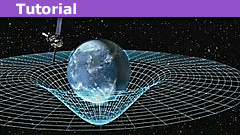
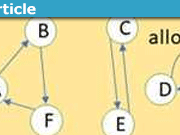
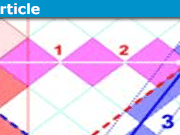
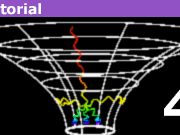
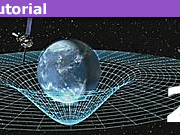



Well, my own understanding of Fermi-Walker transport in Minkowski space, can be found in my SRT FAQ:
https://th.physik.uni-frankfurt.de/~hees/pf-faq/srt.pdf
It's of course clear that "rotation free spatial basis" is meant in a local sense, i.e., for an infinitesimal transport of an arbitrary vector, that is Minkowski perpendicular to the time-like tangent unit vector ##u##, it changes only by an rotation free Lorentz transformation, which is the idea of my derivation of the Fermi-Walker transport equation (1.8.6). Of course for a finite transport the spatial vector is necessarily rotating, if the time-like tangent vector changes direction, since you can see it as a composition of many rotation free Lorentz transformations with varying boost directions, and the composition of two rotation free Lorentz boosts in different boost directions is not rotation free anymore. This is the point of the Thomas precession (or mathematically spoken the Wigner rotation).
For a worldline of hyperbolic motion of a particle it's easy to see. The worldline starting for ##tau=0## at ##x^1=0## is given by
$$x(tau)=begin{pmatrix} sinh(alpha tau)/alpha \ [cosh(alpha tau)-1]/beta. end{pmatrix}$$
The tangent vector along the curve is simply the four-velocity,
$$u(tau)=dot{x}(tau)=begin{pmatrix} cosh(alpha tau) \ sinh(alpha tau) end{pmatrix}.$$
The dot stands for derivatives wrt. proper time, and I use the (+—) convention with ##c=1## for this posting (otherwise I get confused with the signs, although it's no problem to switch to the east-coast convention of course). The acceleration is
$$a(tau)=ddot{x}(tau)=begin{pmatrix} alpha sinh(alpha tau) \ alpha cosh(alpha tau) end{pmatrix}.$$
Now let's start with the basis ##e_0(0)=(1,0)^T##, ##e_1(0)=(0,1)^T## at ##tau=0##. All we need to get the 2-bein along the hyperbolic world line is the Fermi-Walker transport of ##e_1(0)## along this world line. Let's define ##e_1(tau)=(a(tau),b(tau)^T##. Then the FW-transport equation,
$$dot{e}_1=a (u cdot e_1)-u (a cdot e_1),$$
reads
$$begin{pmatrix} dot{a} \ dot{b} end{pmatrix} = begin{pmatrix} alpha b \ alpha a end{pmatrix}.$$
The solution of course leads to
$$e_1(tau)=frac{1}{alpha} a(tau).$$
Indeed ##e_1## is not along ##e_1(0)=(0,1)^T## anymore, although locally not rotating in the sense of the definition of Fermi-Walker transport. Globally it's just the least rotating 2-bein possible along the given world line.
Of course, you could just start with the 2D case to demonstrate the rotation and then state that you keep the rest orthogonal …
Once that is introduced I would probably compare with your Rindler case and the corresponding hyperbolic rotation as I would probably already have discussed other concepts in a similar manner earlier in the course (such as circles <-> hyperbolae, etc).
you need the third direction to demonstrate how vectors orthogonal to both velocity and acceleration do not rotateAh, got it.
Not necessarily; the Rindler case in Minkowski spacetime can be reduced to two dimensions and will still show how the spacelike vector has to rotate to stay orthogonal to the timelike vector.Yes, it is the same in the Euclidean case, but you need the third direction to demonstrate how vectors orthogonal to both velocity and acceleration do not rotate, which was the point of referring to the frame field as somehow being non-rotating. I guess ”minimally rotating” would describe it sufficiently …
The problem with Fermi-Walker transport is that it requires at least three dimensions to make it clear about what ”non-rotating” means.Not necessarily; the Rindler case in Minkowski spacetime can be reduced to two dimensions and will still show how the spacelike vector has to rotate to stay orthogonal to the timelike vector.
I would typically give the example of a circular path in R^3 (which is essentially the Euclidean version of your Rindler frame) and discuss that the tangent change is proportional to acceleration and in order to keep a vector orthogonal to the path orthogonal to the path you would need to change it accordingly proportional to the velocity.Wouldn't this still work if you just looked at the plane of the path, i.e., a circular path in ##R^2##?
I like the Insight in general. It is always interesting to see how others introduce a subject. Personally, I always like to think about and draw parallels (haha :rolleyes:) to the Riemannian (or even Euclidean) analogue to introduce things like these. The problem with Fermi-Walker transport is that it requires at least three dimensions to make it clear about what ”non-rotating” means. I would typically give the example of a circular path in R^3 (which is essentially the Euclidean version of your Rindler frame) and discuss that the tangent change is proportional to acceleration and in order to keep a vector orthogonal to the path orthogonal to the path you would need to change it accordingly proportional to the velocity. Of course, the different metric signature complicates things a little bit but is no stranger than other signs appearing when taking the step to Lorentzian from Riemannian.
This seems to imply that you cannot make a parallel transport along a non-geodesic, which is not true. I believe what you mean to say is that the timelike tangent of a worldline is not parallel transported along a non-geodesic world line.Yes, you're right. I have updated that paragraph accordingly.
of the concept of parallel transport, which only works along geodesics, to transport along worldlines that might not be geodesics, i.e., accelerated worldlinesThis seems to imply that you cannot make a parallel transport along a non-geodesic, which is not true. I believe what you mean to say is that the timelike tangent of a worldline is not parallel transported along a non-geodesic world line.